Foods High In Hyaluronic:
Introduction
Hyaluronan is a body component that is present in every organ and connective tissue, like – synovial fluid (a liquid that helps lubricate and cushion your joints), skin, serum, blood vessels, cartilage, the brain, aorta, the umbilical cord, and heart valves.
In particular, the skin has the largest quantity of hyaluronan in the human body, with around 50 percent of total body hyaluronan present in the skin.
Uses of Hyaluronan
Studies have shown intra-articular injections of HA to be just as effective at managing pain as nonsteroidal anti-inflammatory drugs, generally with fewer side effects, for sufferers with OA (osteoarthritis).
Healthcare professionals also use lubricating hyaluronan formulas to treat eye disorders and injuries, particularly at the time before surgery, when the eyes are the driest and most sensitive.
List Of 15 Foods High In Hyaluronic Acid To Improve Skin Health:
Note – there are no scientifically proven foods that contain HA. Also, just like collagen, the human body produces HA naturally. But, research has shown that the production of HA decreases with age. However, a 2014 study has concluded that vitamin C is essential for the synthesis of HA. Hence, consuming the following foods that are rich in vitamin C can boost the production of HA.
#15 Grapefruit – 37mg/100g (62%DV)

Africa Studio/Shutterstock
Grapefruit is a nutritious citrus fruit that got its name because it grows in clusters like grapes. In addition, grapefruit is related to orange, therefore, it is no surprise it is also rich in vitamin C.
#14 Clementines – 48,8mg/100g (81%DV)
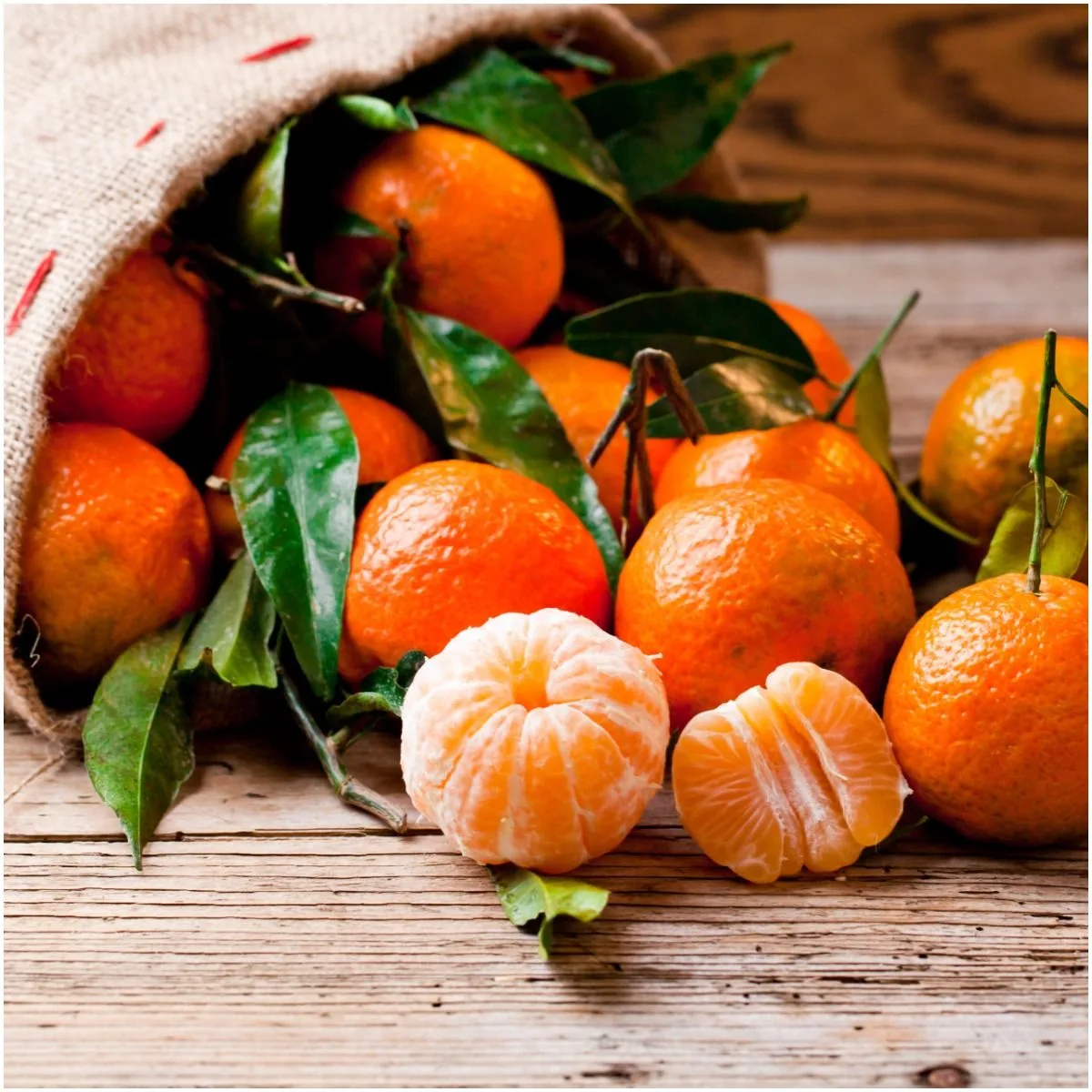
KarepaStock/Shutterstock
Clementine fruit is believed to have been discovered in the early 20th century by a French missionary in Algiers. The fruit only has around 35 calories and is one of the easiest varieties of citrus to peel.
Clementines contain 22 mg of calcium, which is required for bone growth and muscle contraction. One clementine also contains 131 mg of potassium, which is an essential mineral for a healthy body.
#13 Pineapple – 56,4mg/100g (94%DV)

Kotcha K/Shutterstock
Pineapples are delicious tropical fruits, that have been celebrated for hundreds of years, not only for their miraculous health benefits but also for their unique taste. Pineapple originated in South America, where early explorers named it after its resemblance to a pinecone. One cup of pineapple chunks contains the following:
- Iron: 3 percent of the RDI;
- Calories: 82.5;
- Thiamin: 9 percent of the RDI;
- Fat: 1.7 grams;
- Magnesium: 5 percent of the RDI;
- Protein: 1 gram;
- Riboflavin: 3 percent of the RDI;
- Carbs: 21.6 grams;
- Pantothenic acid: 4 percent of the RDI;
- Fiber: 2.3 grams;
- Niacin: 4 percent of the RDI;
- Potassium: 5 percent of the RDI;
- Folate: 7 percent of the RDI;
- Copper: 9 percent of the RDI;
- Vitamin B6: 9 percent of the RDI;
- Manganese: 76 percent of the RDI.
#12 Red Cabbage – 57mg/100g (95%DV)
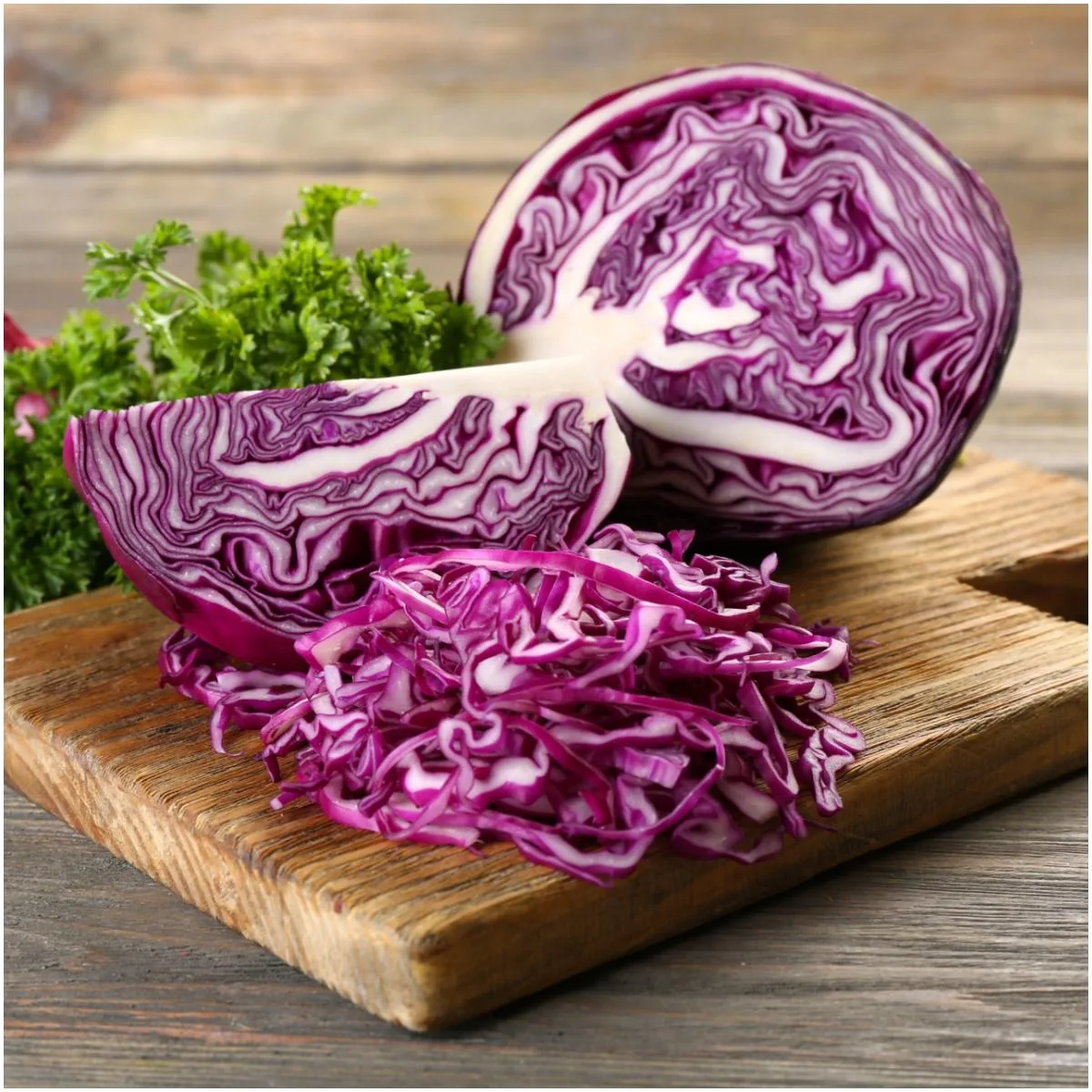
Africa Studio/Shutterstock
Cabbage can be found throughout America, Northern Europe, and parts of China and is a member of the Brassicaceae family. This vegetable can be found in a variety of dishes, including kimchi, sauerkraut, and coleslaw.
The essential components found in red cabbage are – riboflavin, thiamin, calcium, folate, magnesium, manganese, potassium, iron, vitamin E, vitamin A, dietary fiber, vitamin K, and pantothenic acid.
The red color of red cabbage is due to the presence of anthocyanin polyphenols that have potent anti-inflammatory properties.
#11 Strawberries – 58,8mg/100g (98%DV)
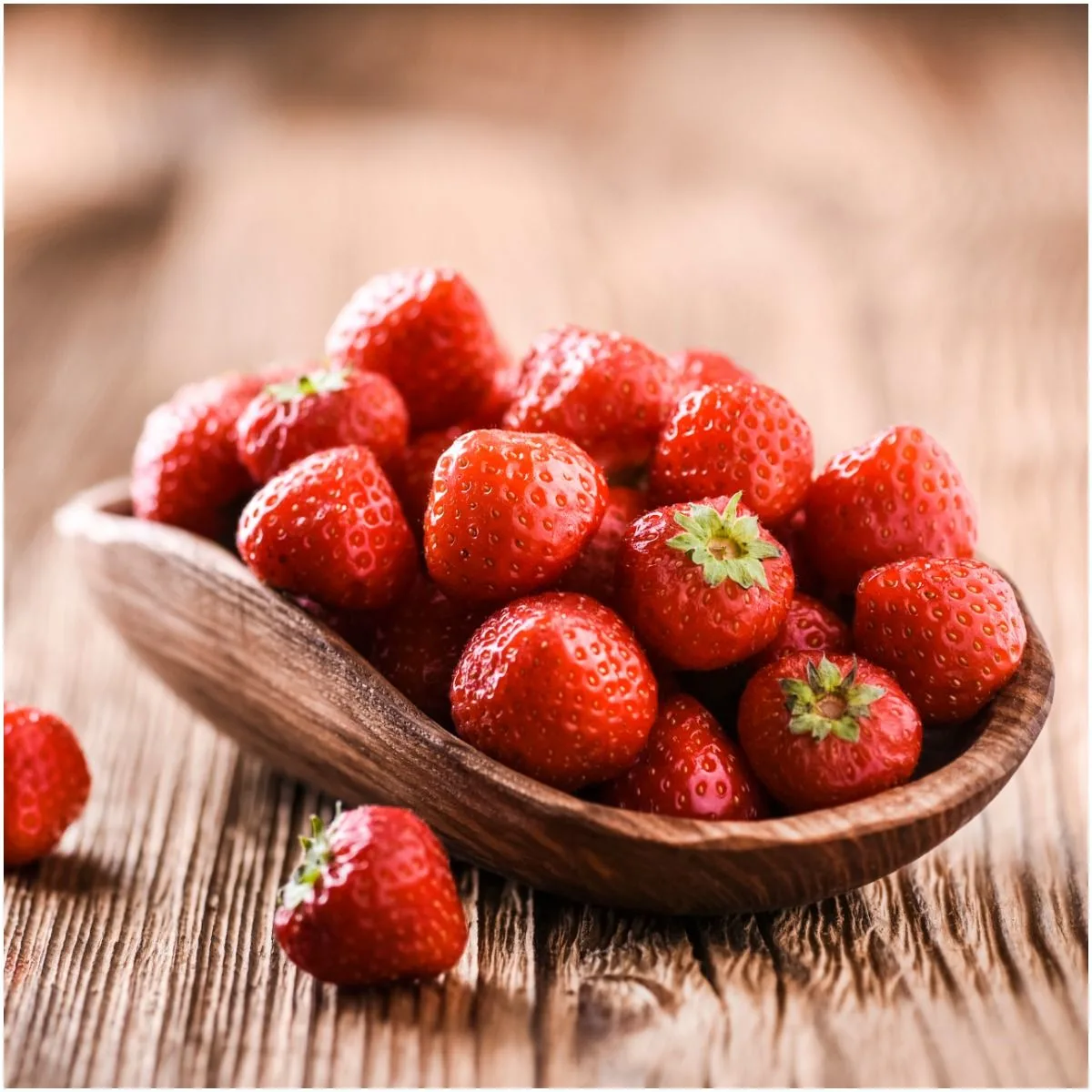
Krasula/Shutterstock
In the present day, there are approximately 600 varieties of strawberries. A strawberry is a red heart-shaped fruit, that is much adored for its nutritional benefits and for its excellent taste.
A phytochemical called ellagic acid which is found in strawberries has been shown to have strong anti-cancer attributes such as suppressing cancer cell growth.
The flavonoid quercetin, contained in this fruit, has natural anti-inflammatory properties which protect against the damage caused by low-density lipoprotein cholesterol and reduces the risk of atherosclerosis (hardening of the arteries).
#10 Papayas – 61,8mg/100g (103%DV)
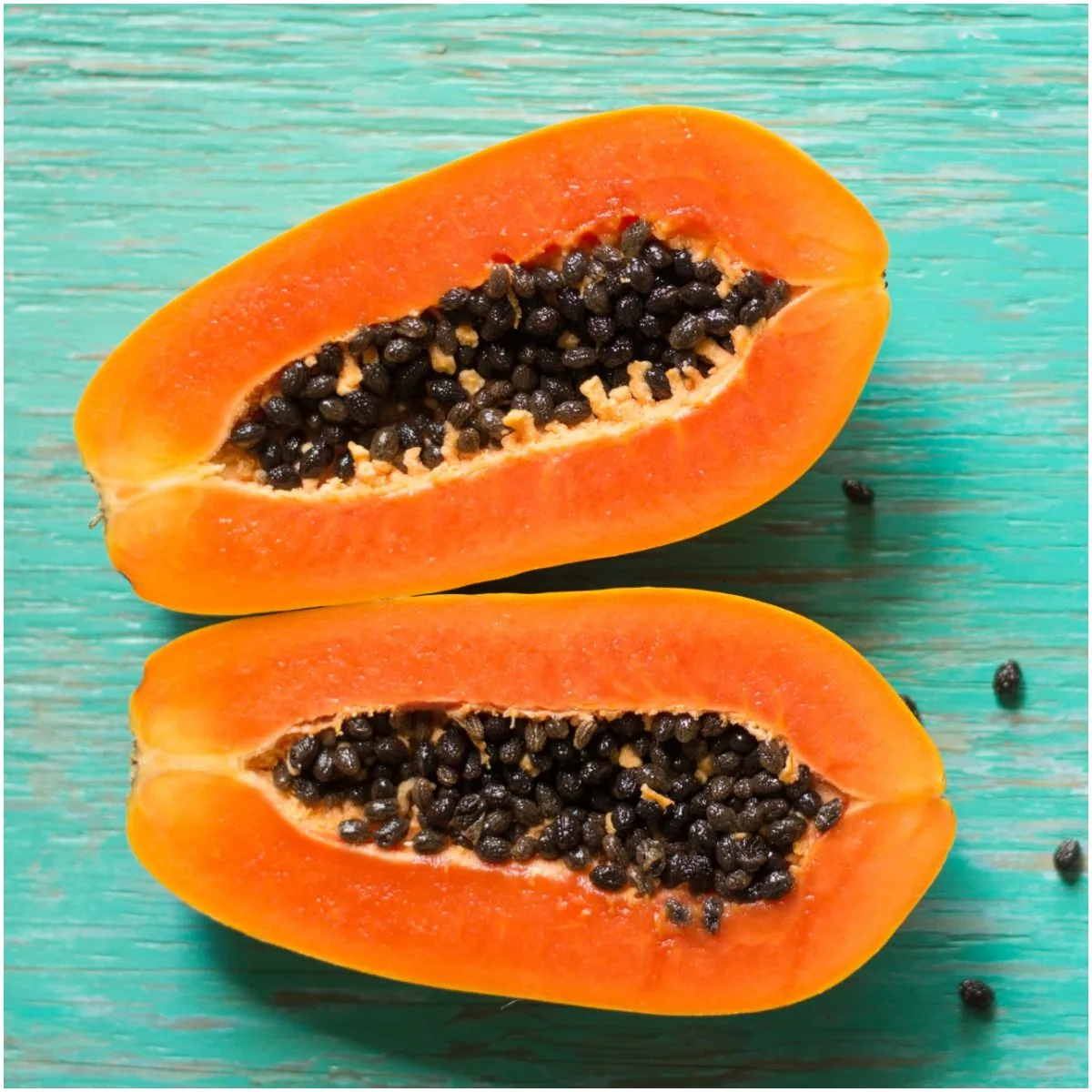
Seksun Guntanid/Shutterstock
The health benefits of papaya include:
- a better heart health;
- skin care;
- weight loss;
- stronger immunity;
- regulated menstruation;
- relief from a toothache;
- better digestion.
Moreover, papaya has many edible black seeds inside the center which are rich in minerals, fiber, and protein.
#9 Persimmons – 66mg/100g (110%DV)
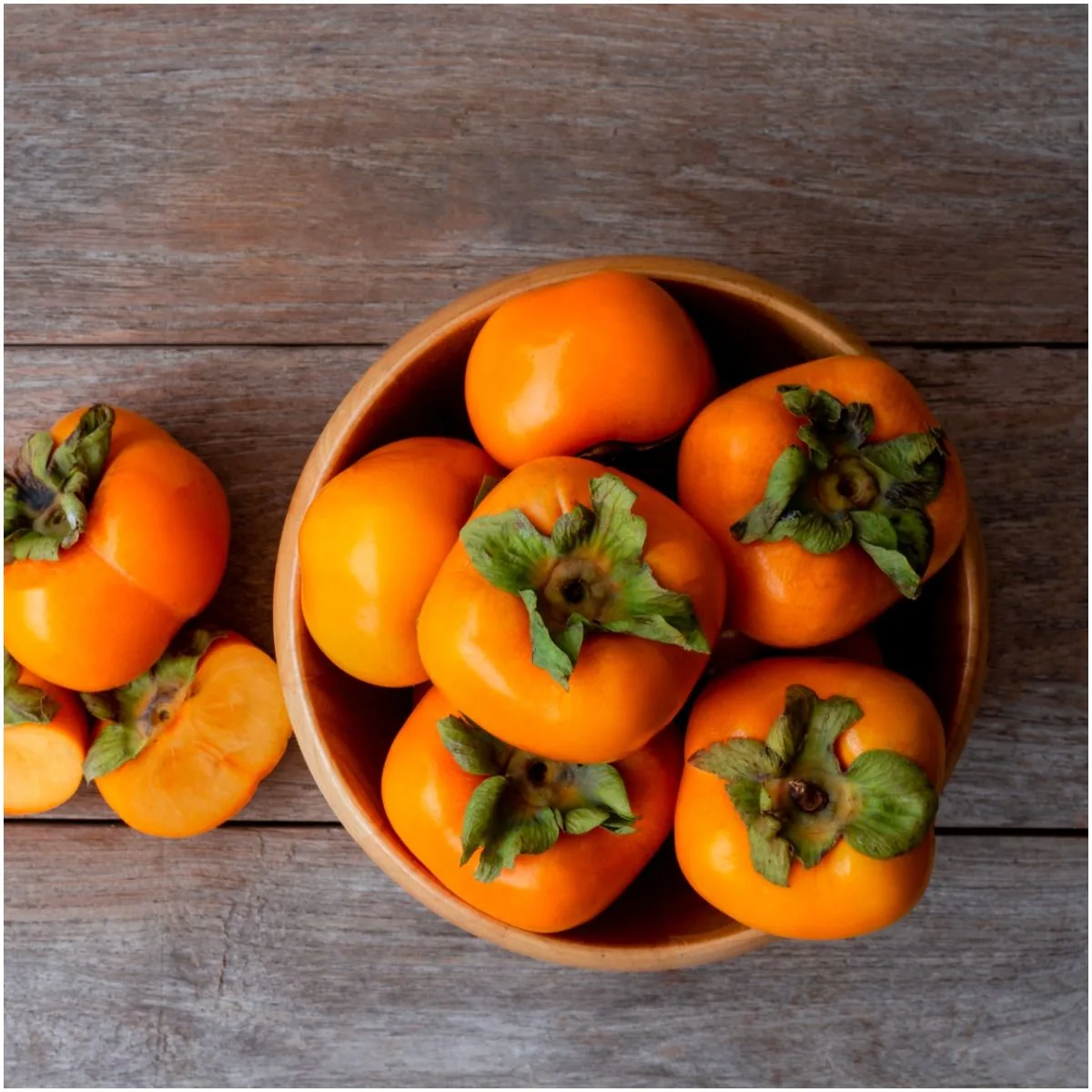
NIKCOA/Shutterstock
These fruits are generally used around the world in drinks, jellies, curries, pies, and puddings and can be eaten dried, fresh, or cooked.
Persimmons have many health benefits packed inside them, including their capacity to reduce signs of aging, improve eye health, improve digestion, and prevent various types of cancer.
#8 Oranges – 71mg/100g (118%DV)

Davizro Photography/Shutterstock
They are high in citrus limonoids, natural compounds that are proven to help fight many different types of cancer, including that of the lung, skin, breast, colon, and stomach.
#7 Cauliflower – 88,1mg/100g (147%DV)

Aybige Mert/Shutterstock
It is a member of the cancer-fighting cruciferous family of vegetables. 1 cup of raw cauliflower contains:
- Magnesium: 4 percent of the RDI;
- Calories: 25;
- Phosphorus: 4 percent of the RDI;
- Fiber: 3 grams;
- Manganese: 8 percent of the RDI;
- Vitamin C: 77 percent of the RDI;
- Potassium: 9 percent of the RDI;
- Vitamin K: 20 percent of the RDI;
- Pantothenic acid: 7 percent of the RDI;
- Folate: 14 percent of the RDI;
- Vitamin B6: 11 percent of the RDI.
This vegetable is high in choline, a nutrient that is involved in the production of neurotransmitters that are required for a healthy nervous system as well as in brain development.
Cauliflower also contains sulforaphane, a compound that has also been shown to kill cancer stem cells.
#6 Kale – 120mg/100g (200%DV)

olepeshkina/Shutterstock
Kale is a cruciferous vegetable like broccoli, cabbage, cauliflower, Brussels sprouts, and collard greens. Kale contains chlorophyll which can help prevent the human body from absorbing heterocyclic amines (a group of chemical compounds, that can be formed during cooking).
#5 Kiwis – 123mg/100g (205%DV)
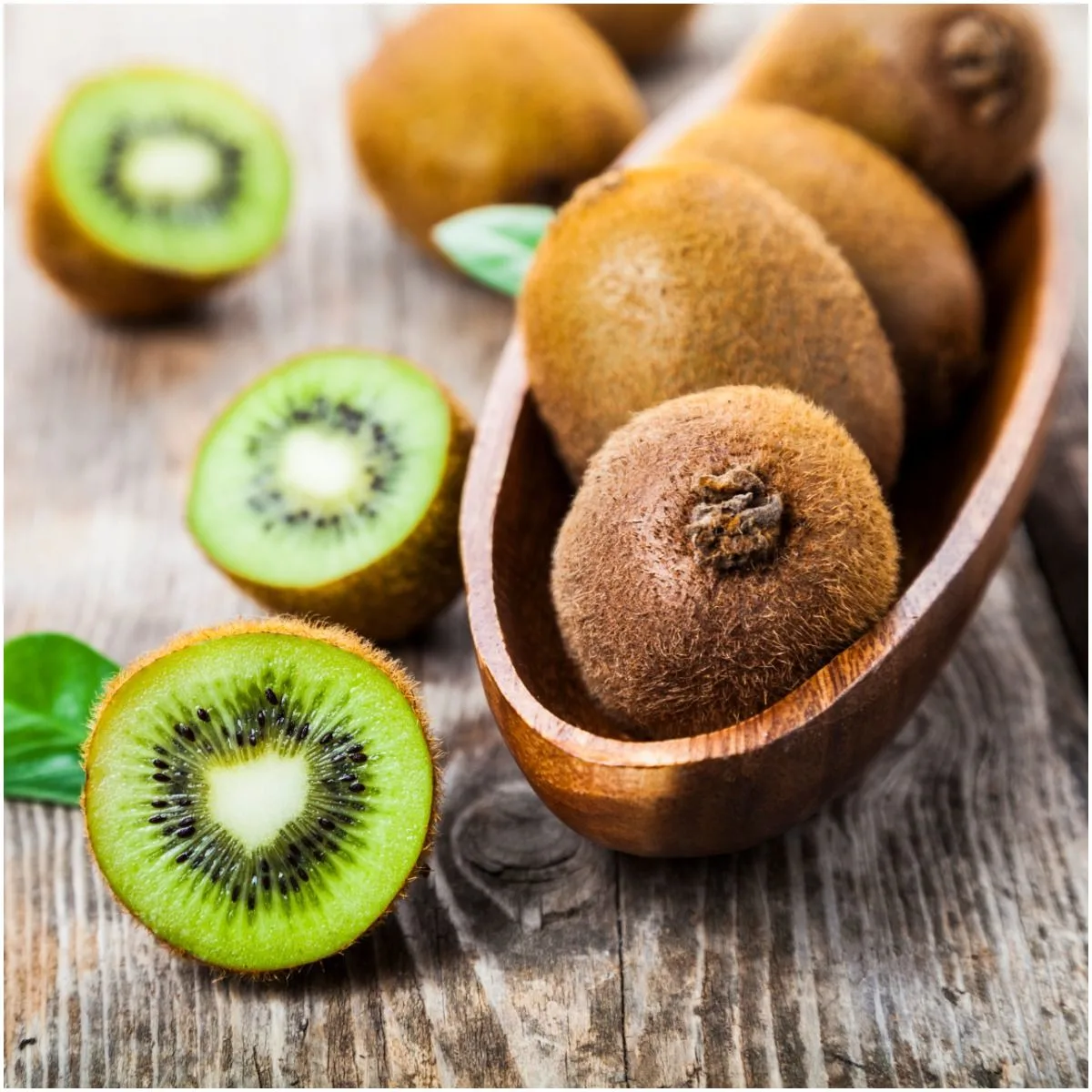
Elena Blokhina
Kiwi, also known as “Chinese gooseberry,” is a nutrient-dense fruit.
READ MORE: Best Foods To Eat After Colonoscopy
#4 Currants – 181mg/100g (302%DV)

Kasabutskaya Nataliya/Shutterstock
They are a powerhouse of nutrition, offering high levels of fiber as well as minerals and vitamins. According to recent research, blackcurrant powder can increase heart blood flow.
READ MORE: Microwave Popcorn – Side Effects
#3 Sweet Yellow Peppers – 183mg/100g (306%DV)
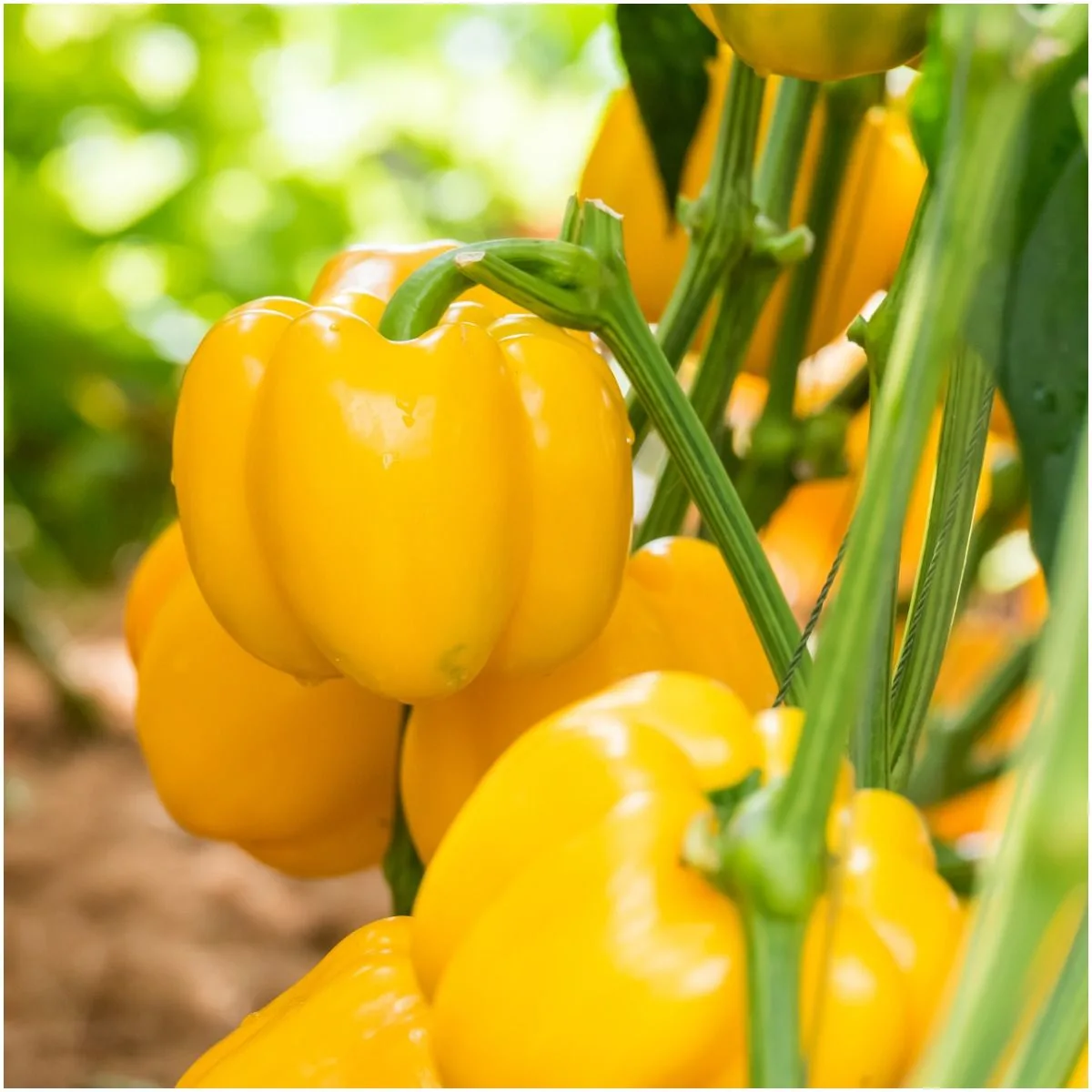
iMoStudio/Shutterstock
With a pleasant sweet taste, yellow bell peppers pair well with a variety of other vegetables. Bell peppers are actually the fruits of some plants from the nightshade family.
They are rich in folate (vitamin B9) that helps to prevent certain types of birth defects in unborn babies as well as it helps in the support of the function of red blood cells.
READ MORE: Thaumatin (E957) – Side Effects
#2 Guavas – 228mg/100g (381%DV)

Max D Photography/Shutterstock
This seasonal fruit is light yellow, green, or maroon in color when it ripens and is usually pear-shaped. Guava (scientifically known as Psidium guajava) is a sweet fruit that is cultivated in tropical climates.
The fruit inhibits the growth of breast cancer cells since it is high in a type of antioxidant called lycopene and also has shown to be widely successful in reducing prostate cancer risk. In addition, it is packed with manganese, an essential trace mineral that helps the human body to absorb other essential nutrients from the food you eat.
READ MORE: Top 25 Foods High In Fiber
#1 Acerola Cherries – 1677mg/100g (2796%DV)
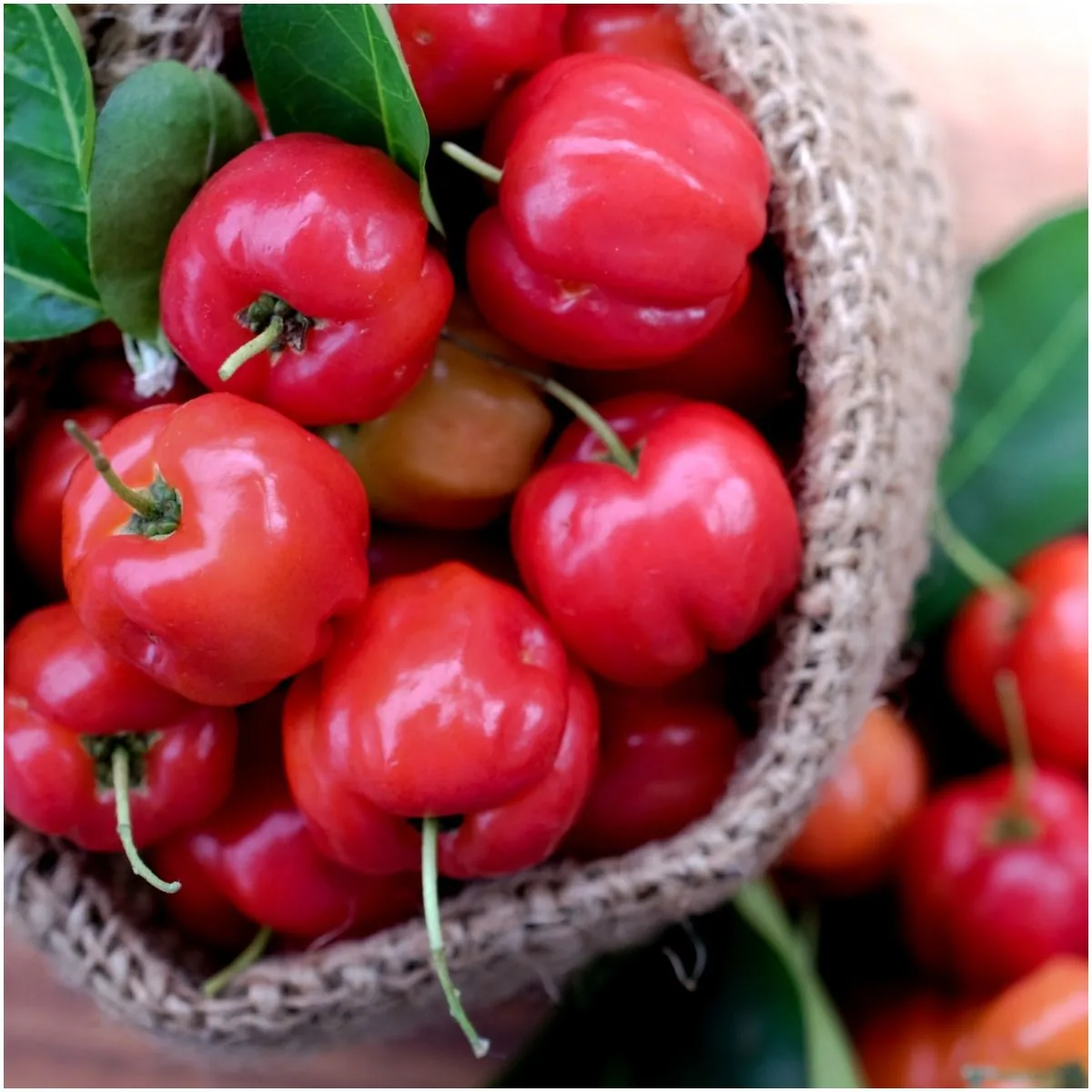
GETSARAPORN/Shutterstock
Acerola cherries, also known as Barbados cherries, West Indies cherries, are a type of fruit that is grown on the evergreen acerola trees. According to research, the antioxidants in acerola cherry can help slow down the release of sugar in the blood.
Featured image credit – Shutterstock
READ THIS NEXT: Coix Seed (Job’s Tears) – Nutrition Facts
Sources https://www.tandfonline.com/doi/abs/10.1080/10601329908951195 https://academic.oup.com/jb/article-abstract/39/1/77/860096?redirectedFrom=fulltext https://www.researchgate.net/publication/283322594_Hyaluronic_acid_in_dermal_rejuvenation_An_in_vitro_study http://jddonline.com/articles/dermatology/S1545961618P0948X/1
